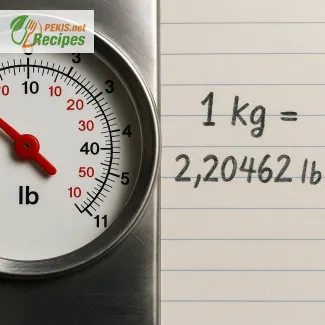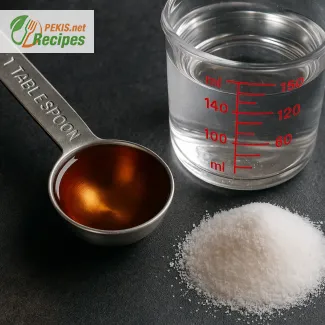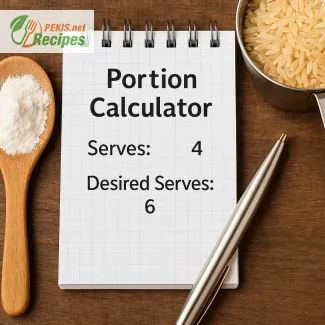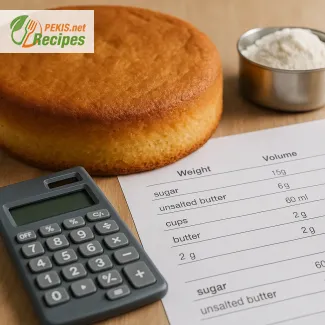
Step-by-step instructions to convert kg to pounds correctly
Learn the most accurate method for weight conversion between metric and imperial units
Understanding the difference between kilograms and pounds
When dealing with weight measurements, especially in cooking, fitness, travel, or logistics, knowing the difference between kilograms and pounds is essential. Kilograms (kg) are part of the metric system, widely used in most countries around the world. Pounds (lb) belong to the imperial system, mainly used in the United States, United Kingdom, and a few other regions.
1 kilogram is equal to approximately 2.20462 pounds, and this fixed ratio makes conversions relatively straightforward once you understand the formula and context of use. However, accurate conversion requires more than just multiplying numbers—it involves precision, consistency, and an understanding of real-world applications.
Convert Kilograms ⇄ Pounds
It works both ways
Why converting kilograms to pounds matters
The need to convert kg to lb arises in many daily and professional situations. In recipes from American sources, weights are often provided in pounds, while European or international recipes tend to use kilograms or grams. The same goes for fitness tracking, where people monitor body weight in pounds or kilograms depending on local norms.
Travelers also benefit from knowing both systems when luggage allowances are shown in kg at European airports but in lb for North American airlines. Similarly, in online shopping, product weights may vary based on the country of origin.
Understanding this conversion empowers users to make more informed decisions, avoid overestimations or underestimations, and maintain consistency across platforms, tools, and standards.
The exact formula for converting kg to pounds
The standard formula to convert kilograms to pounds is:
Weight in pounds = Weight in kilograms × 2.2046226218
For example:
- 1 kg = 2.2046 lb
- 5 kg = 11.0231 lb
- 10 kg = 22.0462 lb
- 70 kg = 154.3236 lb (commonly used for body weight)
This equation remains the same for all conversions, regardless of whether you're weighing flour for a recipe, tracking personal weight, or preparing packages for shipping.
If you're looking for a quick approximation, many users round the factor to 2.2 for mental math. While this is useful for rough estimates, it's best to use the full conversion ratio in professional or precise contexts, such as baking, medicine, or sports.
Common scenarios where kg to lb conversion is useful
Cooking and baking
Recipes, especially those from the US or Canada, frequently list ingredient weights in pounds or ounces. If you're following an international cookbook or online recipe and your kitchen scale uses kilograms, you'll need to convert pounds to kilograms or vice versa. For instance, butter in 1 lb blocks may need to be divided into kilograms to match your baking needs.
Body weight and fitness
Personal weight tracking apps and smart scales often allow toggling between kg and lb. When you're following a fitness program from the US, body weight targets might be listed in pounds. A proper conversion helps maintain motivation and accuracy in goal tracking.
Shipping and logistics
Freight services, airlines, and international courier companies often require shipment details in both systems. A box that weighs 8 kg must be labeled as 17.64 lb for destinations like the US. Using exact conversions avoids extra fees or shipment delays.
Online shopping
With the rise of cross-border e-commerce, product specifications may not match your local units. Kitchen appliances, weights, and consumables may be described in pounds, but need to be understood in kilograms to compare effectively with local equivalents.
Manual conversion vs. using a converter
There are two main ways to convert kilograms to pounds:
- Manual calculation using the standard formula
Multiply the kilogram value by 2.2046226218 to get the result in pounds. - Using a digital converter or calculator
These tools offer instant conversions and are available online, in mobile apps, or integrated into smart assistants. Some digital kitchen scales also feature dual measurement systems, allowing direct reading in kg and lb.
While manual calculations are perfect for understanding the logic, digital converters save time and minimize error. They're especially handy when working with unusual measurements, like 3.67 kg or 11.5 kg.
Avoiding common conversion mistakes
Even though the conversion is mathematically simple, common mistakes can occur:
- Incorrect rounding: Using 2.2 instead of 2.2046 may introduce error in large-scale conversions.
- Forgetting unit labels: Mixing kg and lb in the same context (e.g., recipe or packaging) without labeling can lead to confusion.
- Switching systems unintentionally: If your digital scale switches from metric to imperial without notice, you might write down incorrect weights.
To stay accurate, always double-check your unit labels, and use consistent rounding rules based on the required precision.
Converting pounds back to kilograms
For completeness, here’s how to convert pounds to kilograms. The inverse formula is:
Weight in kilograms = Weight in pounds ÷ 2.2046226218
Example:
- 1 lb = 0.4536 kg
- 5 lb = 2.268 kg
- 20 lb = 9.072 kg
This is especially helpful for users in the imperial system working with international materials, such as foreign cookbooks, fitness plans, or airline rules.
How to convert decimal kilograms to pounds
Some kitchen or digital scales show weight in decimals, like 2.5 kg or 0.75 kg. To convert these accurately:
- 2.5 kg × 2.2046226218 = 5.5116 lb
- 0.75 kg × 2.2046226218 = 1.6534 lb
Even small values like 0.1 kg (100 g) equal 0.2205 lb, which is relevant in precise cooking or child weight monitoring.
If you're measuring dry ingredients like flour, sugar, or spices, these small conversions help ensure the final result is consistent with the intended taste, texture, or balance.
How many pounds in half a kilogram?
Half a kilogram (0.5 kg) is a frequent value in recipes or product packaging. Here's the precise conversion:
0.5 kg × 2.2046226218 = 1.1023 lb
That’s just over 1 pound, which is helpful when estimating weights in international recipes or portion sizes.
For example:
- 0.5 kg ground beef ≈ 1.1 lb
- 0.5 kg bread dough ≈ 1.1 lb
Useful everyday approximations
In practical, everyday situations, people often use approximate values for faster estimations. Here are some helpful approximations:
- 1 kg ≈ 2.2 lb
- 2 kg ≈ 4.4 lb
- 5 kg ≈ 11 lb
- 10 kg ≈ 22 lb
- 20 kg ≈ 44 lb
While not mathematically precise, these rule-of-thumb conversions are commonly used in fitness plans, dietary programs, and quick shipping quotes.
However, for legal or commercial purposes, always use the full conversion factor.
Differences in culinary context between regions
In European recipes, weight is typically given in grams or kilograms, especially for ingredients like flour, sugar, meat, or vegetables. In American and Canadian cooking, pounds and ounces are preferred.
For example:
- 1 lb of flour ≈ 0.4536 kg ≈ 3½ cups all-purpose flour
- 2.2 lb = 1 kg, used in European recipes for bread or cake
When converting, keep in mind that volume and weight aren’t interchangeable unless the density of the ingredient is known. For dry ingredients, cups are sometimes used, but the gram/pound equivalent ensures more consistent baking results.
Tips for accurate weight conversions in the kitchen
If you’re using metric recipes with imperial kitchen tools, or vice versa, keep these tips in mind:
- Always zero your kitchen scale before adding ingredients.
- Know the weight per volume of ingredients you use often (e.g., flour = ~125 g per cup).
- Use digital converters bookmarked on your phone or browser.
- Keep a conversion chart near your cooking area.
This allows you to adapt any recipe quickly, regardless of its origin.
When to use kilograms vs. pounds
Use kilograms when:
- You're in a metric country (Europe, Asia, South America).
- Your recipe, product, or shipment is labeled in kg or g.
- Your scale displays metric values only.
Use pounds when:
- You're working with US-based products or services.
- Recipes come from American cookbooks or websites.
- You're sending goods to a country using the imperial system.
The ability to switch back and forth without hesitation helps bridge international standards, especially for global brands, traveling chefs, or home bakers following worldwide trends.
Best practices
To ensure smooth and consistent conversion from kilograms to pounds, follow these best practices:
- Memorize or bookmark the 2.2046 conversion factor.
- Use digital tools when precision matters.
- Be mindful of unit labeling and rounding errors.
- Understand the context of use, especially in recipes, travel, or fitness.
- Keep a conversion cheat sheet handy for quick reference.
With just a bit of practice, converting kg to lb becomes second nature and enhances your ability to follow international recipes, manage weight, or calculate shipping costs with confidence.


